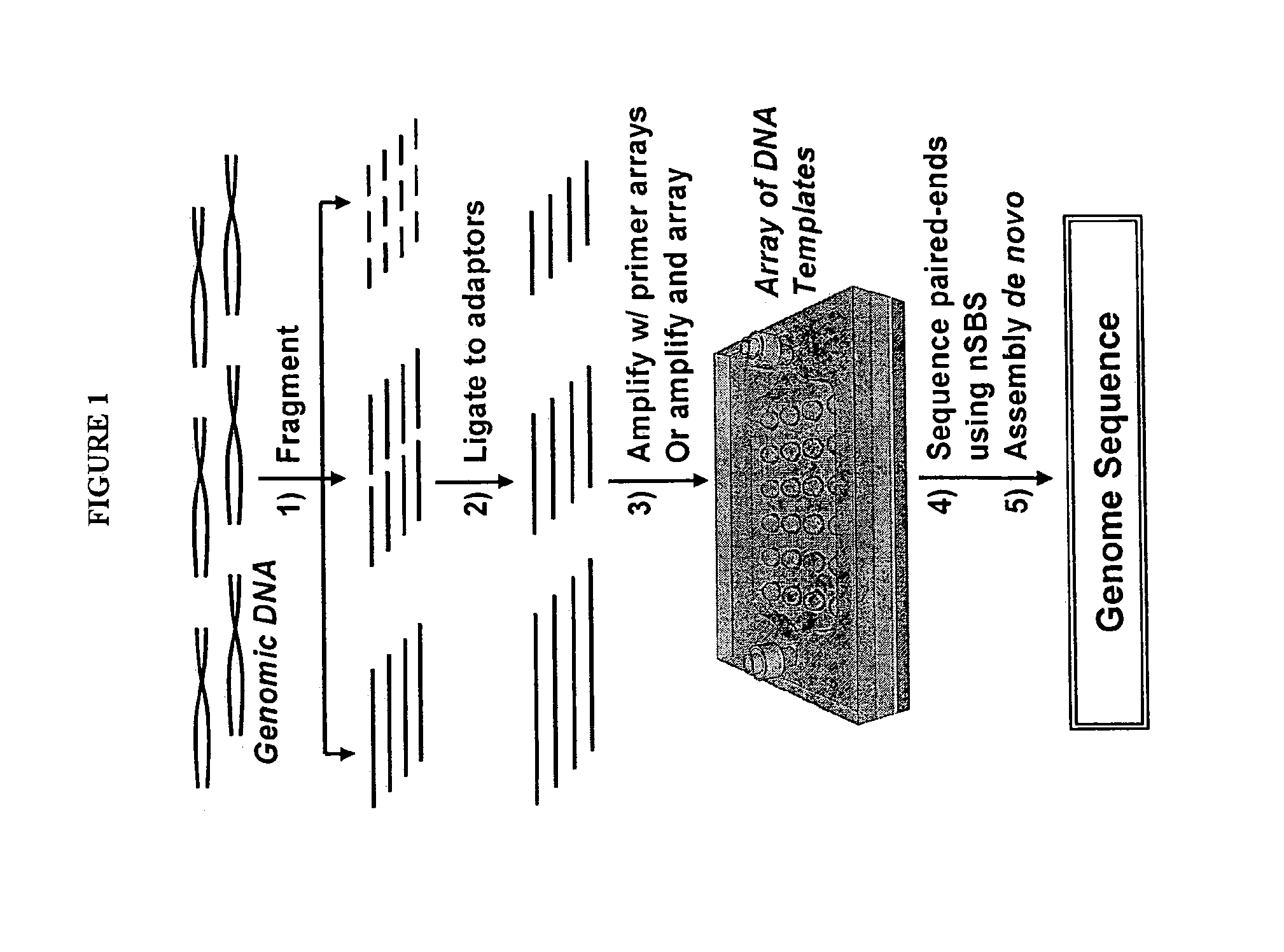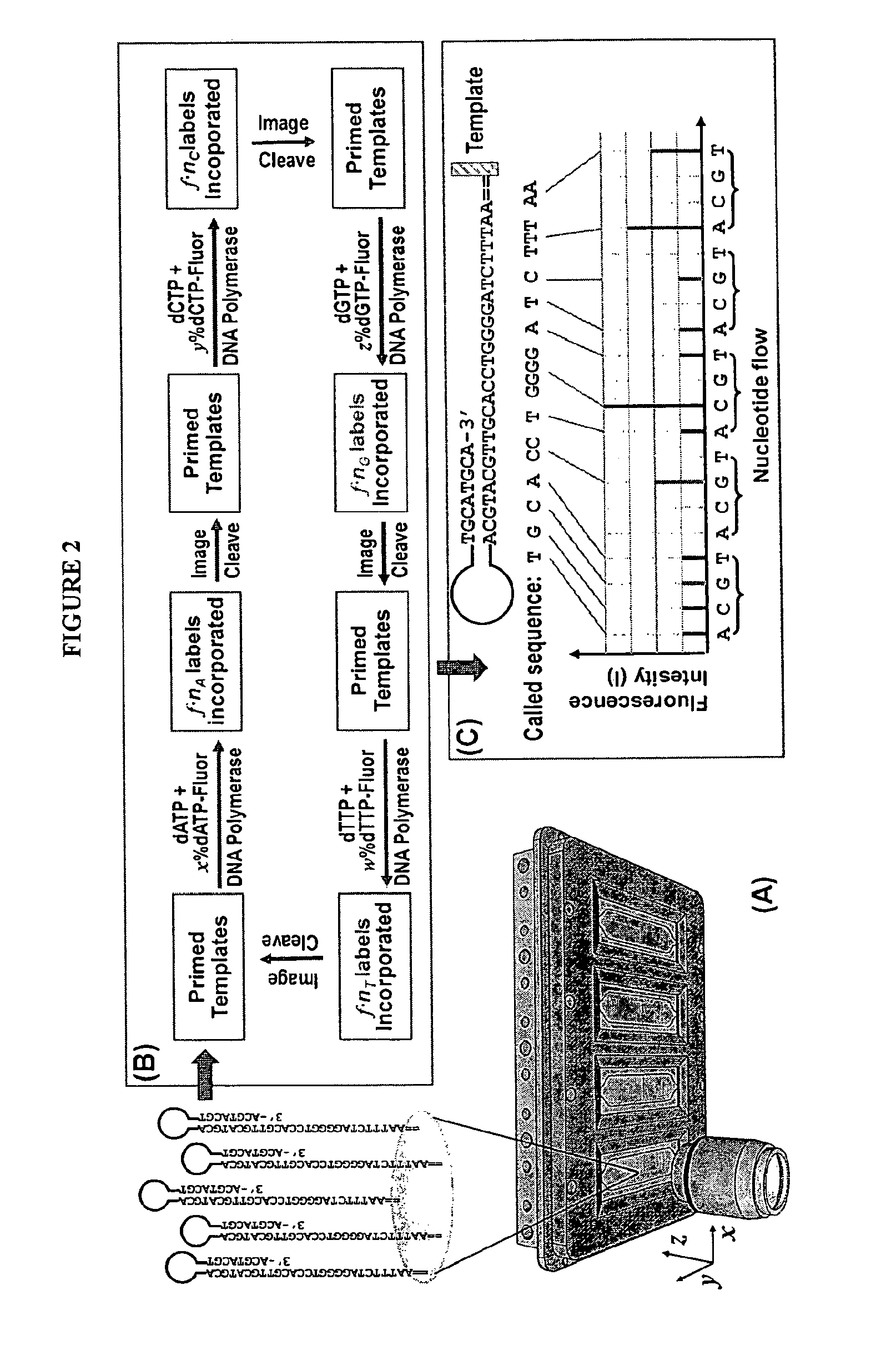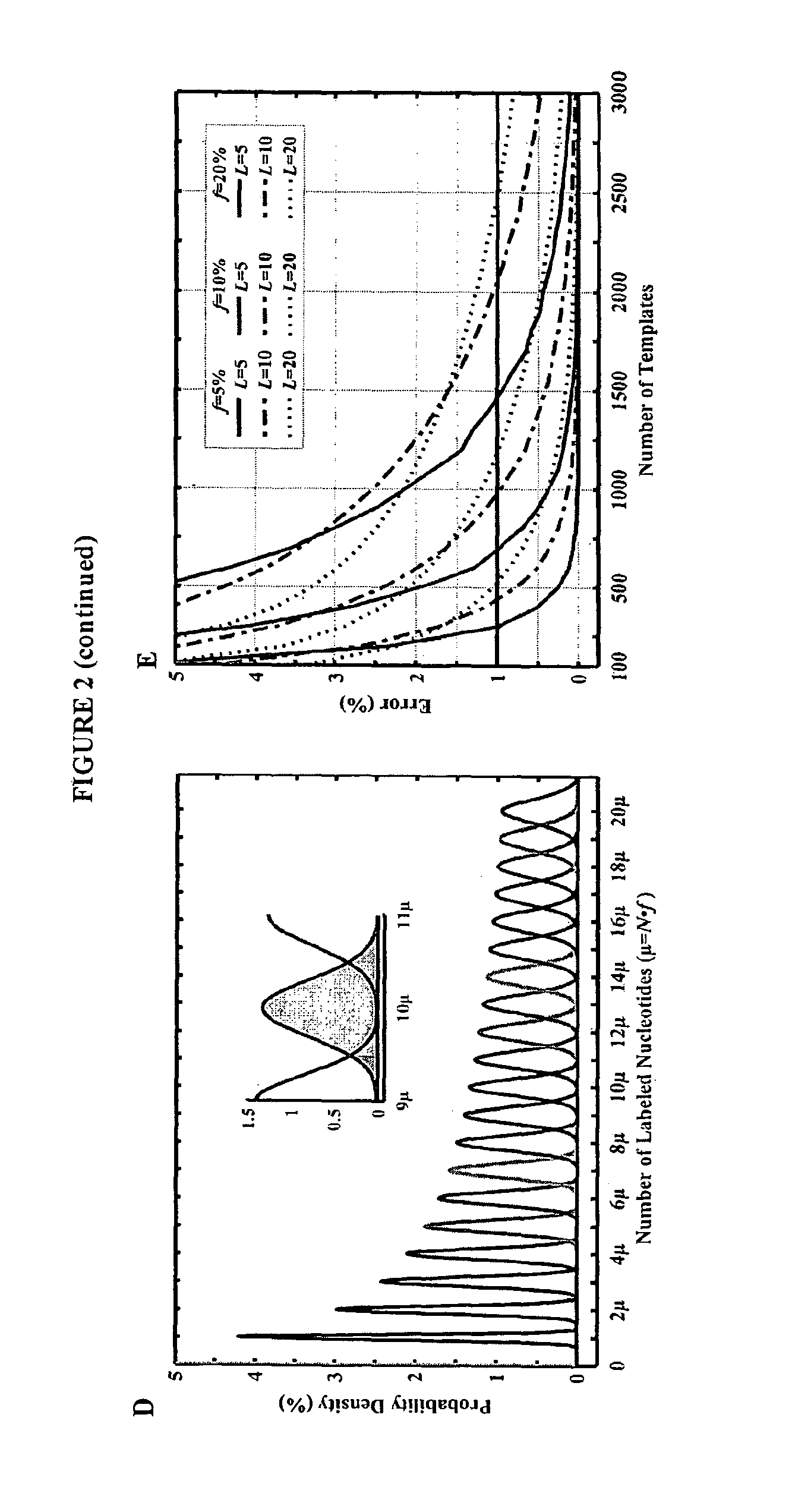Mostly natural DNA sequencing by synthesis
a technology of synthesis and dna sequencing, applied in biochemistry apparatus and processes, library member identification, organic chemistry, etc., can solve the problems of slow step-wise incorporation of such sterically hindered non-natural nucleotides, inefficient, and limited sequence read length, and achieve rapid and inexpensive genome re-sequencing, not significantly perturbed
- Summary
- Abstract
- Description
- Claims
- Application Information
AI Technical Summary
Benefits of technology
Problems solved by technology
Method used
Image
Examples
example 1
nSBS
[0173]The example describes the feasibility of nSBS using a variety of PCR amplified DNA templates of known sequences with dual biotin labeled primers. The biotinylated templates will be immobilized and assembled into an array onto the surface of a cover glass coated with Neutravidin. The cover glass is then assembled into the flow cell (see, e.g., FIGS. 2 and 4). The basic principle and the workflow of nSBS are illustrated in FIGS. 1 and 2. Hairpin primers can be used to enable paired end sequencing (see FIG. 3) (Ju et al., Proc Natl Acad Sci USA 103, 19635-40 (2006)). The DNA polymerases can be bound onto the DNA template by pre-incubation of the polymerases with the primed templates and periodically replenished. A fully automated Zeiss 200M inverted fluorescence microscope system is used for quantitative measurement of the fluorescence from the templates after each addition of nucleotide. All the instruments are controlled by a computer and the whole data acquisition process ...
example 2
Accuracy and Capacity of the nSBS Strategy
[0178]This example describes computer simulations of the accuracy of our sequencing strategy. These simulations utilize a theoretical model for base calling and Monte Carlo simulations to assess the feasibility of the method with random sequences from the human genome. Sequencing errors were calculated as a function of DNA template numbers, fraction of incorporated fluorescent labels and homopolymer read lengths. According to the calculations described herein, long homopolymer stretches up to 20 bases can be sequenced with high accuracy and Q20 (with 99% accuracy) using the methods of the invention. In addition, read lengths of up to 1,000 bases can be achieved with less than 10,000 copies of DNA template and 10% of the nucleotides in each incorporation step being labeled. The simulations also demonstrate that a Q20 read length of greater than 100 bases can be achieved, even if the sequencing is performed with 1,000 copies of template DNA an...
PUM
| Property | Measurement | Unit |
|---|---|---|
| diameter | aaaaa | aaaaa |
| diameter | aaaaa | aaaaa |
| diameter | aaaaa | aaaaa |
Abstract
Description
Claims
Application Information
 Login to View More
Login to View More - R&D
- Intellectual Property
- Life Sciences
- Materials
- Tech Scout
- Unparalleled Data Quality
- Higher Quality Content
- 60% Fewer Hallucinations
Browse by: Latest US Patents, China's latest patents, Technical Efficacy Thesaurus, Application Domain, Technology Topic, Popular Technical Reports.
© 2025 PatSnap. All rights reserved.Legal|Privacy policy|Modern Slavery Act Transparency Statement|Sitemap|About US| Contact US: help@patsnap.com



